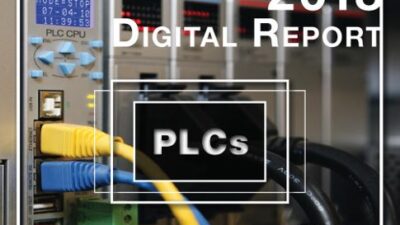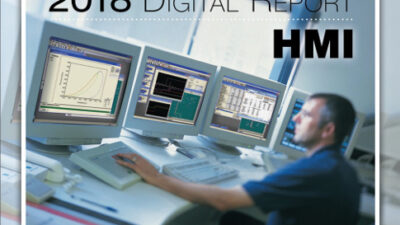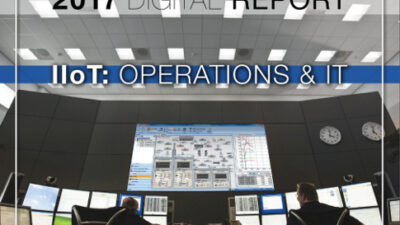The term mechatronics, discussed in Control Engineering for more than eight years, recently has gained popularity for describing integration of various motion technologies. Mechatronic designs can create intelligent automation, suggests Dr. Jörg Leonhardt, CEO of Innovation Management for SEW-Eurodrive , Dr. Jörg Leonhardt keeps his eyes on the future, and one foot in the past. Control Engineering caught up with Dr. Leonhardt at Pack Expo 2006 in Chicago, IL, for this exclusive interview.
CE : Recently, we’ve heard a great deal about mechatronics. Why is the concept of mechatronics important?
Leonhardt : Mechatronics is the synergy between electronic and mechanical technologies. It’s a combination that creates new features and new capabilities. Mechatronics is about putting more intelligence into all devices, from phones and appliances for consumers to factory floor equipment.
We’re living in a world that is increasingly flat and inter-related. Everything we do has become more complex. As automation suppliers, our job is to make it easier for customers to manage these complexities. This is driving rapid changes in technology. By building more intelligence into devices, we make it easer for customers to achieve their objectives.
Factory automation requires managing many different devices from many different suppliers. We’re trying to simplify that by reducing the number of components and adding new functionality to our products.
Miniaturization of components is enabling us for the first time to integrate electronic and mechanical technologies. Drives, controls, HMI and communication networks can now be combined in a single compact device, creating solutions that improve performance yet are easier for customers to implement and operate.
The more complex the device, the simpler we need to make it for customers to use. It’s all about simplifying the management of complexity, enabling them to constantly monitor systems, more tightly control processes and avoid problems that add unnecessary costs. Everyone is focused on accomplishing more, in less time and at lower cost.
Drive engineering plays an increasingly important role in the automation of machines because they have a significant impact on operating performance, including energy consumption, machine availability, maintenance costs and startup times. By building more intelligence and greater functionality into drive-based automation systems, we make it easier for customers to control complex processes.
Miniaturizing components reduces their cost, which makes it more affordable to build greater functionality into devices. We’re only at the beginning stages in developing mechatronic solutions, but it’s obvious that this engineering approach holds great promise.
CE : What are the advantages of decentralized control and which industries could benefit most from using it?
Leonhardt : Applications that are spread out over large areas, like automotive assembly, logistics and packaging, are ideal candidates for decentralized control. These all involve large conveyor systems that require precise control of repetitive activities. Managing these functions from a central point requires complex programming and extensive wiring. By breaking down these activities into a more manageable set of functions, and by putting control systems on the machine, closer to the action, you’re able to improve response times, simplify installation and improve operating performance at lower cost.
Decentralized intelligence provides a completely independent platform that can deliver more functionality because it can incorporate control, communication, locally integrated safety technology, and application solutions in a single, easy-to-use device.
CE : In looking out over the next 5 or 10 years, what trends do you see emerging, and how will they influence drive technology?
Leonhardt : Mechatronic design will enable us to build intelligence into what have traditionally been thought of as “dumb” mechanical devices like motors and reducers. In the future, mechanical devices will have electronic sensors and controls inside, enabling them to self-monitor and run their activities without human assistance.
It’s already happening in automobiles, for example, where small microcontrollers monitor and control many different functions without the driver having to take any action. Or appliances like washing machines and ovens, where the consumer can access pre-programmed routines by touching a few buttons.
These machines may look the same as before, because the intelligence is concealed from the user, but they’re actually intelligently functioning decentralized devices. The consumer gets the benefits of this intelligence in improved performance or increased functionality, but doesn’t have to be an engineer or programmer to use it.
This is what is happening with factory automation today, giving new life and usefulness to mechanical devices. Mechatronic solutions will have the magic to change our world. It’s exciting to be at the forefront of this technology revolution with all my colleagues at SEW.
Company background: SEW-Eurodrive is a privately held manufacturer of integrated power transmission and motion control systems. Headquartered in Germany, the company has more than 10,000 employees with a presence in 44 countries worldwide and generated sales of more than 1.4 billion Euros in 2005. U.S. operations include a state-of-the-art manufacturing center, five regional assembly plants, more than 60 technical sales offices and hundreds of distributors and support specialists.
For more information about mechatronics, type that word into the search box atop any page at www.controleng.com .
— C.G. Masi , Control Engineering senior editor


